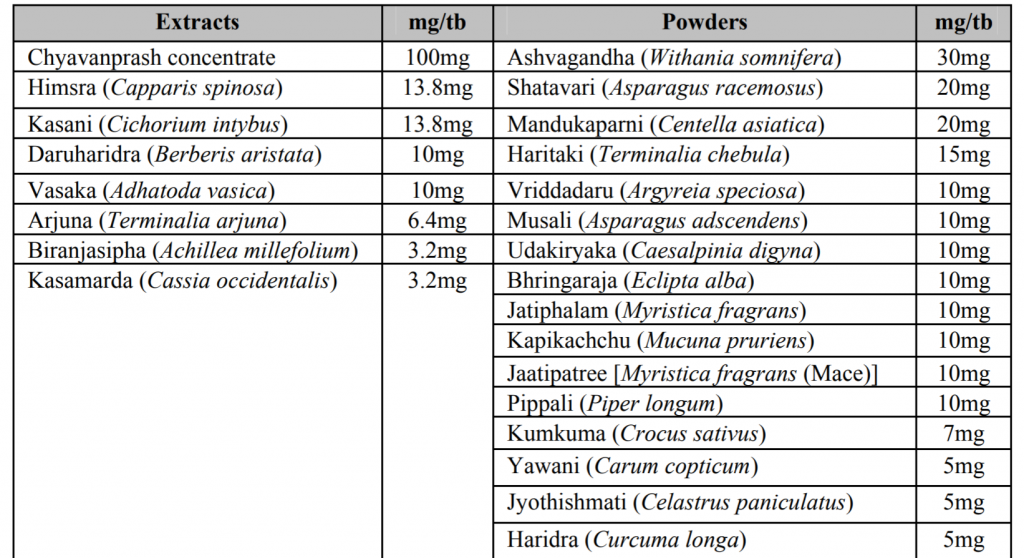 Himsra (Capparis sepiaria) is a herb that has been traditionally used in Ayurvedic, Unani and Chinese medicine. Himsra has a number of physiological effects that relate to its antioxidant, antiviral and anti-inflammatory activity. These properties give the herb a beneficial effect against hepatitis and xenobiotic induced liver damage and make it an excellent liver tonic. This liver protective effect explains the use of himsra in polyherbal formulas that are aimed at offering protection against liver damage. Himsra is particularly important in Ayurvedic medicine, and evidence supports the traditional use of the herb as a hepatic stimulant that can be used for improving the functional capacity of the liver. In addition, the use of himsra has been shown to support the histological architecture of the liver and to increase liver weight in cases of liver damage, due to the accelerated regeneration of liver tissue. Himsra may also improve liver glycogen stores and normalises reduced levels of serum proteins caused by liver damage.
Himsra (Capparis sepiaria) is a herb that has been traditionally used in Ayurvedic, Unani and Chinese medicine. Himsra has a number of physiological effects that relate to its antioxidant, antiviral and anti-inflammatory activity. These properties give the herb a beneficial effect against hepatitis and xenobiotic induced liver damage and make it an excellent liver tonic. This liver protective effect explains the use of himsra in polyherbal formulas that are aimed at offering protection against liver damage. Himsra is particularly important in Ayurvedic medicine, and evidence supports the traditional use of the herb as a hepatic stimulant that can be used for improving the functional capacity of the liver. In addition, the use of himsra has been shown to support the histological architecture of the liver and to increase liver weight in cases of liver damage, due to the accelerated regeneration of liver tissue. Himsra may also improve liver glycogen stores and normalises reduced levels of serum proteins caused by liver damage.

The polyherbal formula (Liv 52) has been shown to be an effective hepatoprotective agent in a number of studies. These studies include experimentally induced hepatic damage in animals as well as human clinical studies in patients with viral hepatitis. Himsra is an important part of this formula because it possesses antiviral, antioxidant and anti-inflammatory activity that could all explain the liver protective effects that it is evidenced to have. Liv 52 has also been shown to be beneficial to subjects suffering from clinically diagnosed cirrhosis of the liver, and this has been suggested to be due to the diuretic, antioxidant, anti-inflammatory and immunomodulatory effects of the formula. A typical dose of Liv 52 for specific liver problems might be 275 to 550 mg three times daily as capsules or 5 to 10 mL of liquid. A lower dose could be taken as a general liver tonic.
A number of studies have investigated the liver protective effects of himsra. For example, himsra has been shown to protect rats and mice from paracetamol (acetaminophen) and carbon tetrachloride induced liver damage, respectively. This protective effect may result from the presence of p-methoxy benzoic acid in the extracts of himsra. The effectiveness of himsra as part of a polyherbal formula aimed at treating individuals with viral hepatitis has been investigated. Generally the studies to date have indicated that the formula is effective at improving the function and structure of the liver in subjects with viral hepatitis. In chemical studies, evidence shows that himsra possesses antioxidant properties. In particular, water and ethanol extractions of himsra demonstrate free radical scavenging and and metal chelating activities superior to vitamin E (α-tocopherol). As free radical generation is a major component of liver damage, the antioxidant effects of himsra may contribute to its liver protective effects.

The polyherbal formula, Geriforte contains himsra and other Ayurvedic herbs. This formula has been shown to significantly improve antioxidant status in humans. In particular, Geriforte may improve levels of erythrocyte catalase activity. This in turn increases free radical quenching ability and stabilises the membranes of the erythrocytes and provides cytoprotective effects. These effects may be similar to those seen in the hepatoprotective effects of Liv 52 which likely also stem from a significant increase in antioxidant delivery to cells.
Eat Well, Stay Healthy, Protect Yourself
RdB
